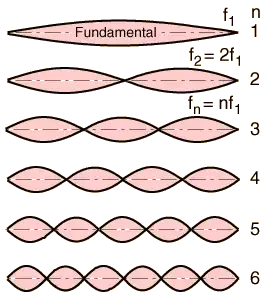In a comment you said "in my mind frequencies are for sound what chemical elements are for matter".
So, sin waves are not extremely special. The process of breaking down a wave phenomina into linear combination some set of base component and being able to reconstruct it from the coefficients is not at all special to sin (or cos) waves.
Any sufficiently dense set of funtions (in a formal sense) that separates things sufficiently and contain the constant functions will do.
As it happens, sin waves have nice easy to work with mathematical properties, and the fourier transform being its own inverse has a certain elegance.
You can see practical applications of that fact, such as wavelets used in jpeg compression. These wavelets aren't periodic like sin waves, yet a linear combination of such wavelets is dense in amplitude space.
You can step back and look at the fourier transform. You start with some wave. You multiply it against the original signal (using convolution), and from the result work out how much they overlap and what is the best scale of the wave to approximate the original signal.
Then you subtract that scaled wave from the original signal. This "removes the frequency component" from the original signal (in that if you convolved it with the wave again, you'd get zero).
We then repeat this with different frequencies, each time "removing a frequency component". So long as the frequency components we remove are orthogonal to each other (a generalization of being "at right angles"), removing new frequency components doesn't "bring back" the old ones.
As it happens, "removing the frequency component" corresponds to an operation.
If you set of a resonance cavity of length L down which pressure waves travel at speed S, and have some repeating set of pressure waves, the cavity will amplify the part of the pressure wave of frequency L/S that roughly corresponds to a the convolution of the sin wave with the amplitude of the pressure wave over time.
That seems pretty academic, but have you ever looked at your ears?
They are resonance cavities. Pressure waves go in, and bounce back and forth.
Along the side of it, there are hairs that pick up changes in pressure. Waves of various frequencies are amplified and damped by the resonance chamber and excite and ignore a predictable set of hairs.
In short, our ears split pressure waves into something a lot like what fourier analysis does. We have physical fourier transformers on our head attached to our brain.
So when we do a fourier analysis and say that there is a strong signal at 550 Hz, this corresponds to what our ears hear because our ears are doing something that the math approximates and mapping the pressure waves into a spectrum of frequencies for us to hear.
Our eyes don't do that.
When you do fourier analysis on images, you do get useful results, but there often are nasty singularities and artifacts.
For a given frequency of photon, the universe of light is very similar to the universe of sound at human scales (one moves faster). But instead of a resonance cavity for photons, we have a pinhole camera and lens. This gives us great directional resolution on light. Meanwhile, the ear gives us great temporal resolution on sound. With our ears, we can hear if something is vibrating at 500 Hz or at 600 Hz really obviously; with our eyes, if you took a light and flashed it on and off at 500 or 600 Hz you wouldn't even see it.
Our eyes instead have pigments that absorb certain frequencies of photon, split the infinite dimensional photon frequency space into a 1 to 4 dimensional cube, and give us high resolution positional information about where photons come from.
The step of mapping photon frequencies to the 1-4 pigments corresponds to a convolution, which you can approximate with a fourier transform, but the spacial positioning doesn't really correspond to a resonance cavity like frequency tool. Thus when you use fourier analysis on positions of lights,it doesn't map that well to our perceptual experience.
In short, no, the pure sin curve as a fundamental component of sound is an artifact of how we hear. Given something vibrating in a specific way, you'll get a pure sin curve, but vibrating in that specific way isn't fundamental to the universe either.
